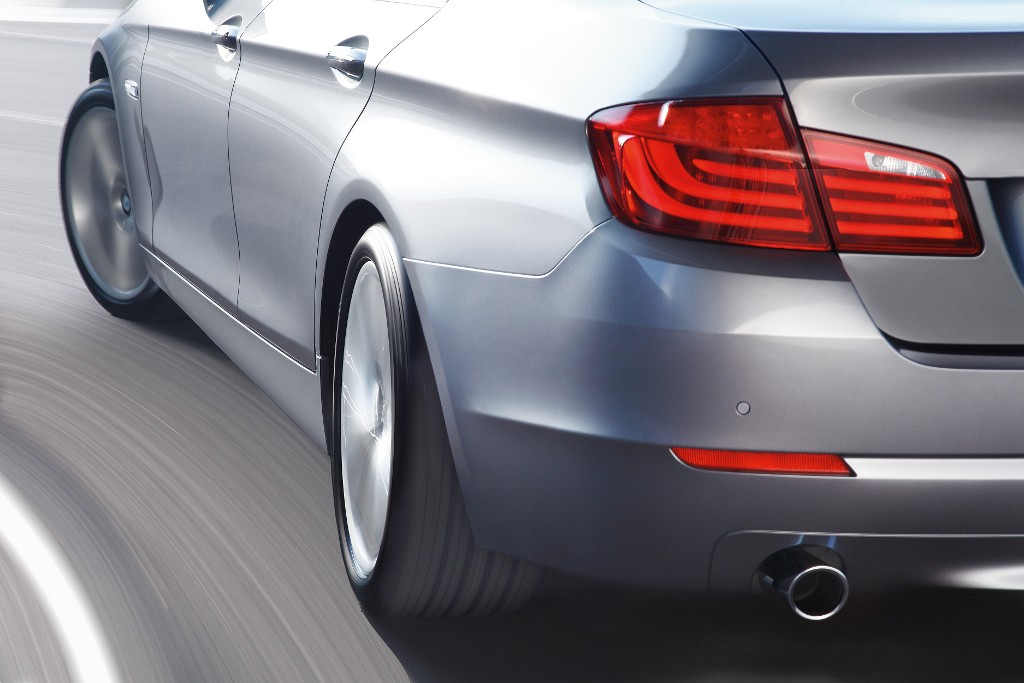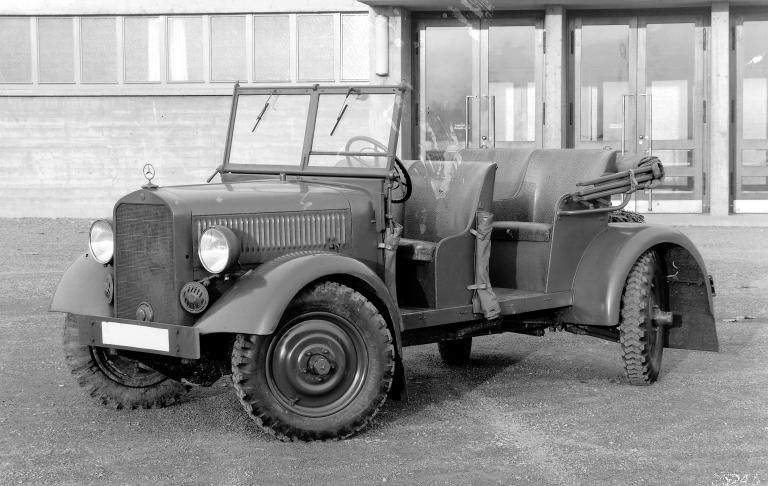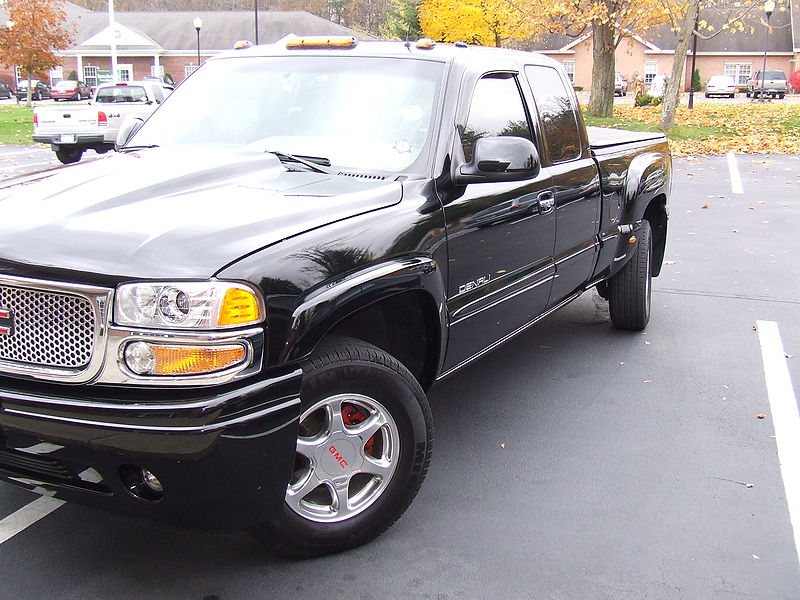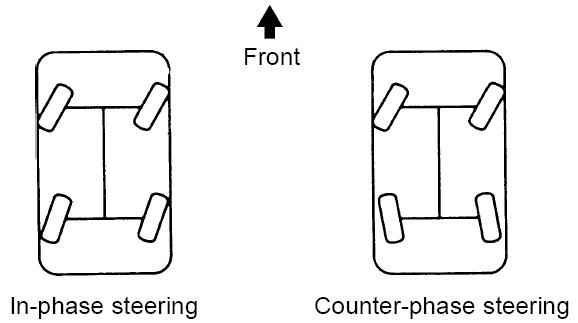Also known as four-wheel steering (4WS) or all-wheel steering (AWS), integral steering is a technology featured only on some vehicles that improves maneuverability and stability while driving at both low and high speeds. In a system of this kind, all four wheels turn at the same time when the driver steers. However, the rear wheels cannot turn as far as the front wheels.
In some cases, the vehicles are fitted with controls that switch off the rear steer and option to steer only the rear wheels independent of the front wheels.
A computer is used to control the rear wheels and determines how much and in which direction the rear wheels should move, and whether the rear wheels should turn in the same direction as the front wheels or in the opposite direction. The movement varies up to a couple of inches. At slow speeds, the rear wheels move the opposite direction of the front wheels. This makes for easier parking and maneuvering.
The integral system which varies the steering angle of the rear wheels increases safety, stability and comfort to particularly benefit rear-seat passengers. At higher speeds the system ensures extremely comfortable and superior response on the road when changing lanes and in bends. At low speeds the car's turning circle is decreased to enhance performance. In addition to the enhancement of stability in quick direction changes, it also ensures better handling in brake maneuvers.
Most four wheel steering systems can control the rear wheels in two ways. At slow speeds, the rear wheels are turned in the opposite direction of the front wheels, while at higher speeds the rear wheels are turned in the same direction as the front wheels. This will make it easier for lane changing.
Daimler-Benz had already developed four-wheel drive, four-wheel steering vehicles for the Forest Service in the 1930s. Their rear wheels were designed to turn in the opposite direction to the front wheels so that the vehicle could make sharp turns along narrow mountain roads. However, two of this system's pioneers were Honda’s Prelude line and GM’s Delphi Quadrasteer. Only a few manufacturers then used active four wheel steering in some of their vehicles, such as Infiniti, BMW, Mazda, Nissan and Toyota.
Today, BMW, Infiniti (in their G and M cars) and Renault (on the Laguna) are the ones that make use of this technology. Let’s take, for example, BMW’s Integral Active Steering featured on the 7 Series and 5 Series. Under 60 km/h, the front and rear wheels steer in opposing directions to reduce the turning circle and ensure every bend is taken with precision. Above 80 km/h the front and rear wheels turn in the same direction to ensure an extremely comfortable and superior response on the road when changing lanes.
Similarly, the Active Drive chassis with four-wheel steering on the Renault Laguna GT works like this: At speeds of less than 60 km/h, the rear wheels turn in the opposite direction to the front wheels, up to an angle of 3.5°. This brings two advantages: a smaller turning circle, for easy maneuvering; and smaller steering wheel angles thanks to the more direct, specially calibrated steering. With four-wheel steering on the Active Drive chassis, Renault Laguna GT has a 10 per cent smaller turning circle than with two-wheel steering: 10.80 metres (with 18-inch tires) instead of 12.05m.
With front wheels and rear wheels turning in opposite directions, the car effectively pivots, which means smaller steering angles are needed for the same turning effect. Whereas it takes a 16° steering wheel angle to produce a 1° turn in the front wheels on New Laguna, it takes just 13.5° with the Active Drive chassis. And this drops to 12° when the rear wheels are turned at the maximum 3.5° angle in the opposite direction to the front wheels.
Finally, the electronic control unit on the 4-Wheel Active Steer system (4WAS) from Infiniti calculates the desired vehicle dynamics from a series of sensors, including vehicle speed and steering angle, and directs the system actuator to change rear geometry by moving both rear suspension lower links.
In some cases, the vehicles are fitted with controls that switch off the rear steer and option to steer only the rear wheels independent of the front wheels.
A computer is used to control the rear wheels and determines how much and in which direction the rear wheels should move, and whether the rear wheels should turn in the same direction as the front wheels or in the opposite direction. The movement varies up to a couple of inches. At slow speeds, the rear wheels move the opposite direction of the front wheels. This makes for easier parking and maneuvering.
The integral system which varies the steering angle of the rear wheels increases safety, stability and comfort to particularly benefit rear-seat passengers. At higher speeds the system ensures extremely comfortable and superior response on the road when changing lanes and in bends. At low speeds the car's turning circle is decreased to enhance performance. In addition to the enhancement of stability in quick direction changes, it also ensures better handling in brake maneuvers.
Most four wheel steering systems can control the rear wheels in two ways. At slow speeds, the rear wheels are turned in the opposite direction of the front wheels, while at higher speeds the rear wheels are turned in the same direction as the front wheels. This will make it easier for lane changing.
Daimler-Benz had already developed four-wheel drive, four-wheel steering vehicles for the Forest Service in the 1930s. Their rear wheels were designed to turn in the opposite direction to the front wheels so that the vehicle could make sharp turns along narrow mountain roads. However, two of this system's pioneers were Honda’s Prelude line and GM’s Delphi Quadrasteer. Only a few manufacturers then used active four wheel steering in some of their vehicles, such as Infiniti, BMW, Mazda, Nissan and Toyota.
Today, BMW, Infiniti (in their G and M cars) and Renault (on the Laguna) are the ones that make use of this technology. Let’s take, for example, BMW’s Integral Active Steering featured on the 7 Series and 5 Series. Under 60 km/h, the front and rear wheels steer in opposing directions to reduce the turning circle and ensure every bend is taken with precision. Above 80 km/h the front and rear wheels turn in the same direction to ensure an extremely comfortable and superior response on the road when changing lanes.
Similarly, the Active Drive chassis with four-wheel steering on the Renault Laguna GT works like this: At speeds of less than 60 km/h, the rear wheels turn in the opposite direction to the front wheels, up to an angle of 3.5°. This brings two advantages: a smaller turning circle, for easy maneuvering; and smaller steering wheel angles thanks to the more direct, specially calibrated steering. With four-wheel steering on the Active Drive chassis, Renault Laguna GT has a 10 per cent smaller turning circle than with two-wheel steering: 10.80 metres (with 18-inch tires) instead of 12.05m.
With front wheels and rear wheels turning in opposite directions, the car effectively pivots, which means smaller steering angles are needed for the same turning effect. Whereas it takes a 16° steering wheel angle to produce a 1° turn in the front wheels on New Laguna, it takes just 13.5° with the Active Drive chassis. And this drops to 12° when the rear wheels are turned at the maximum 3.5° angle in the opposite direction to the front wheels.
Finally, the electronic control unit on the 4-Wheel Active Steer system (4WAS) from Infiniti calculates the desired vehicle dynamics from a series of sensors, including vehicle speed and steering angle, and directs the system actuator to change rear geometry by moving both rear suspension lower links.




